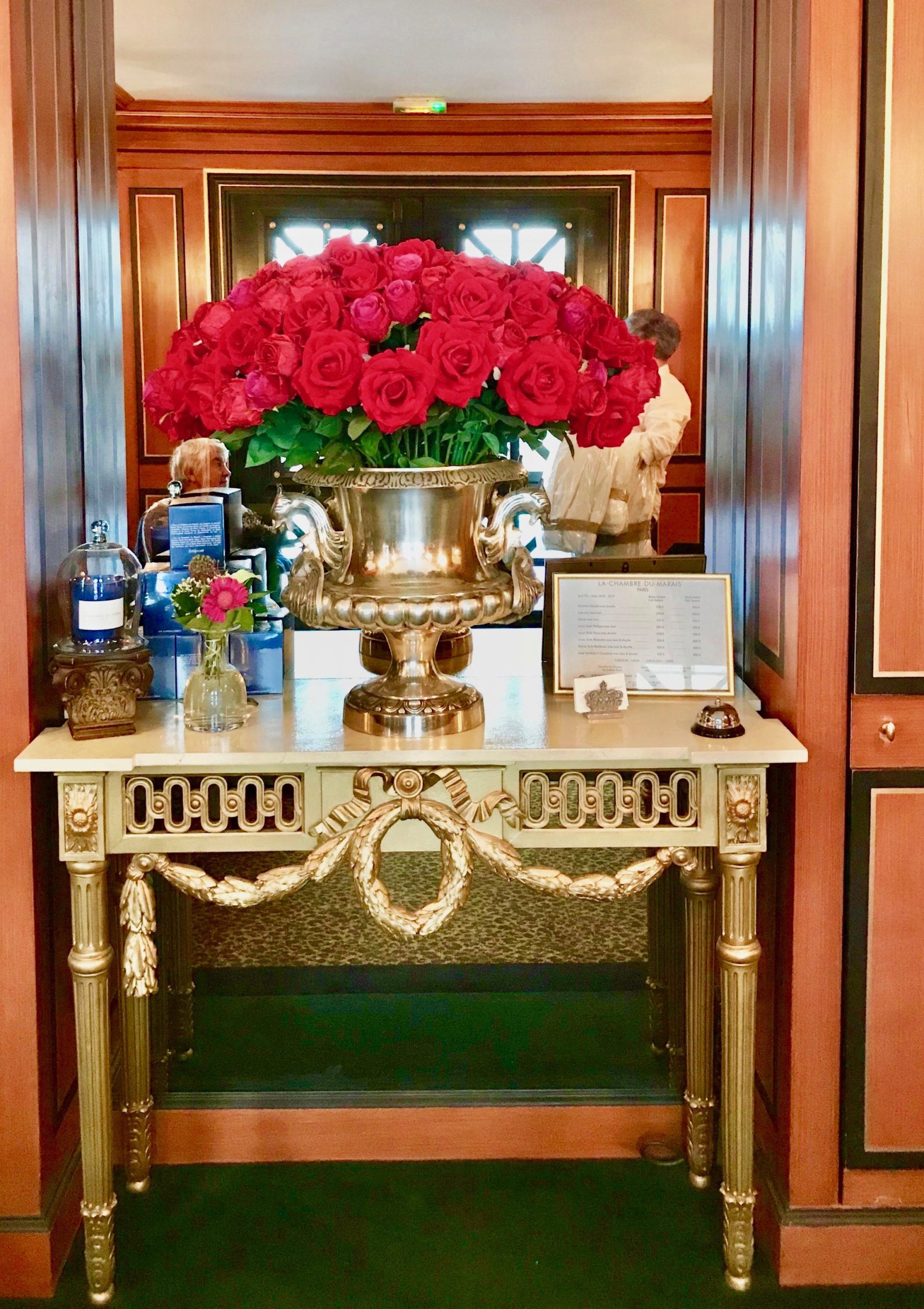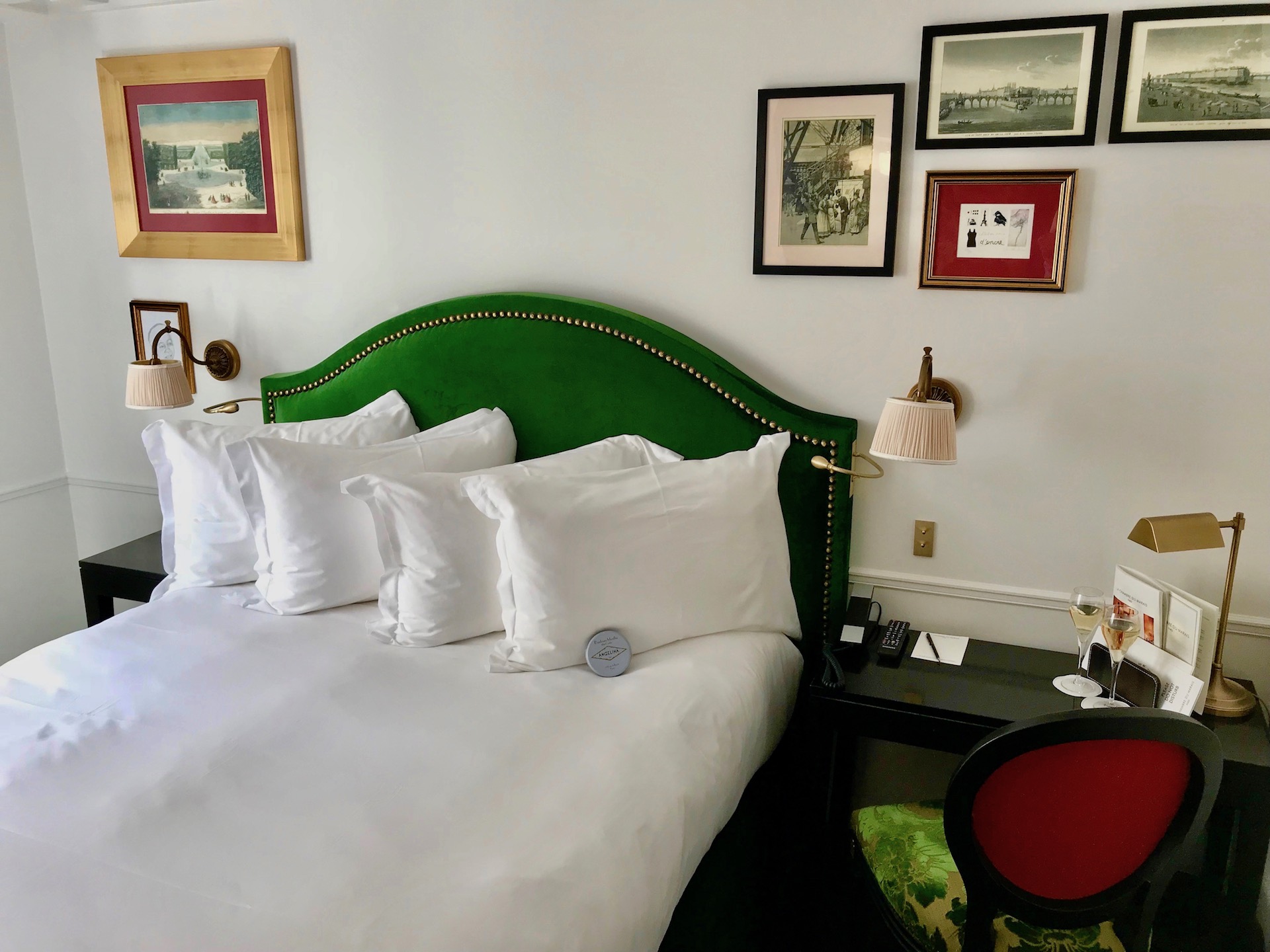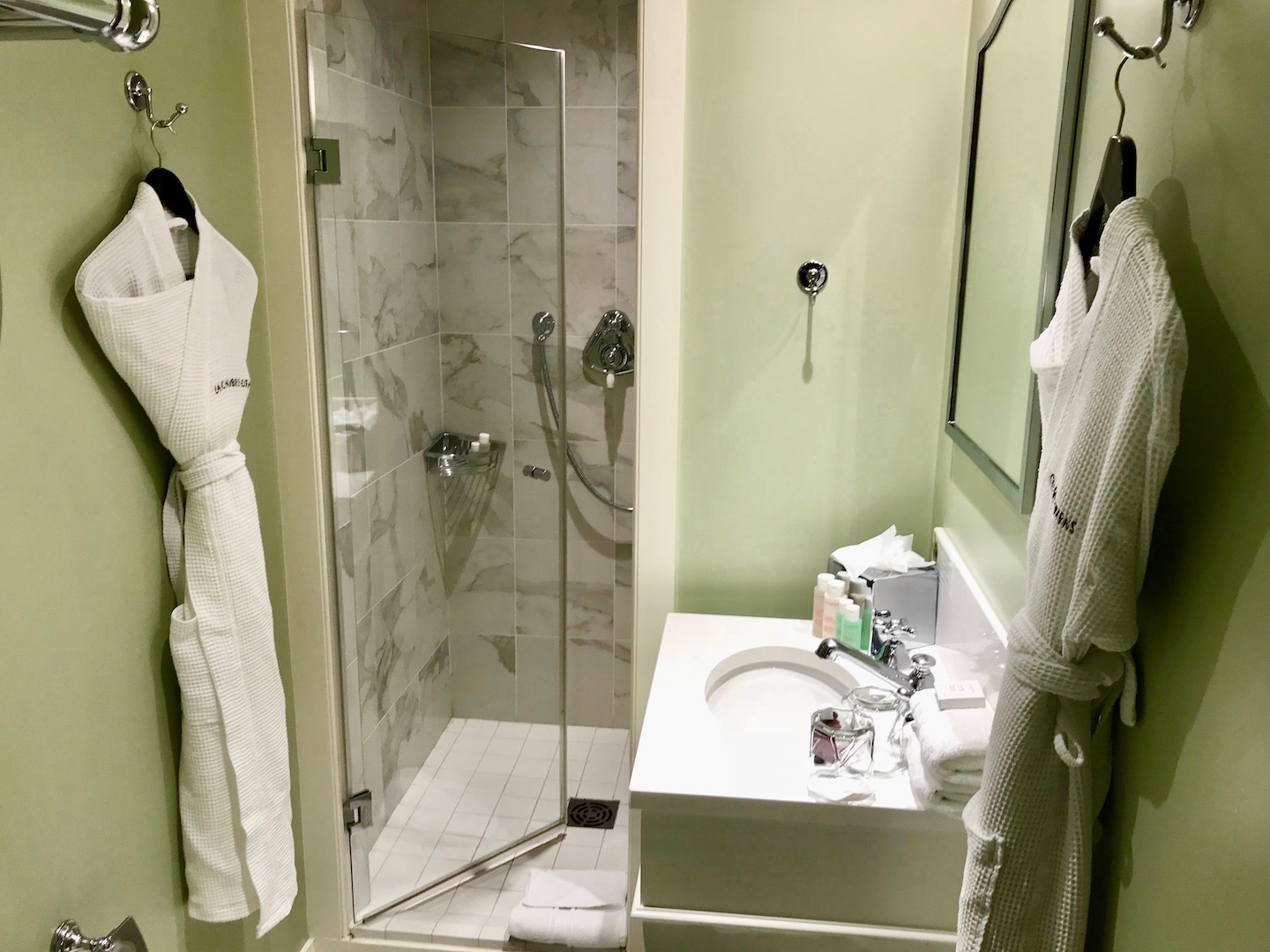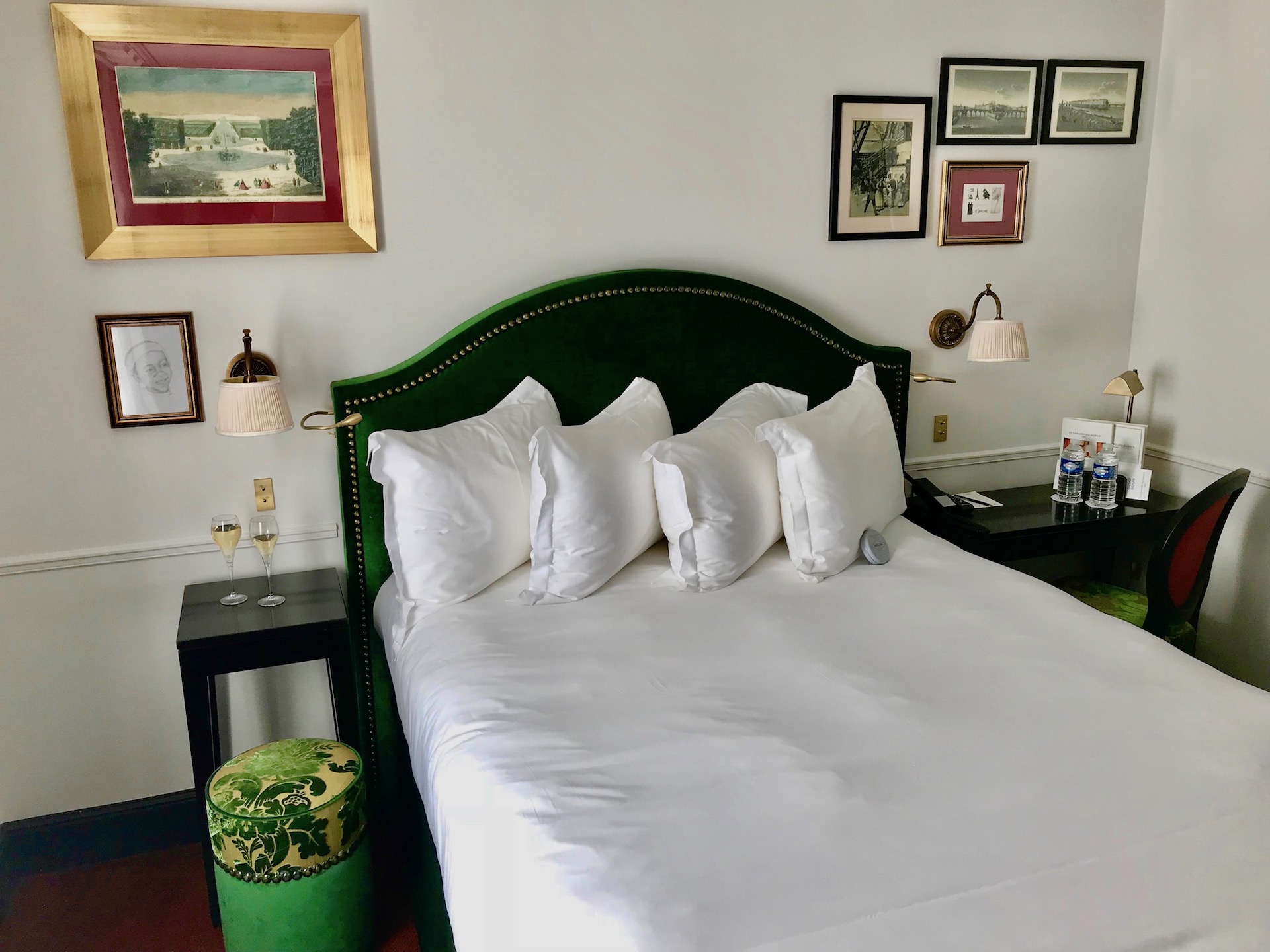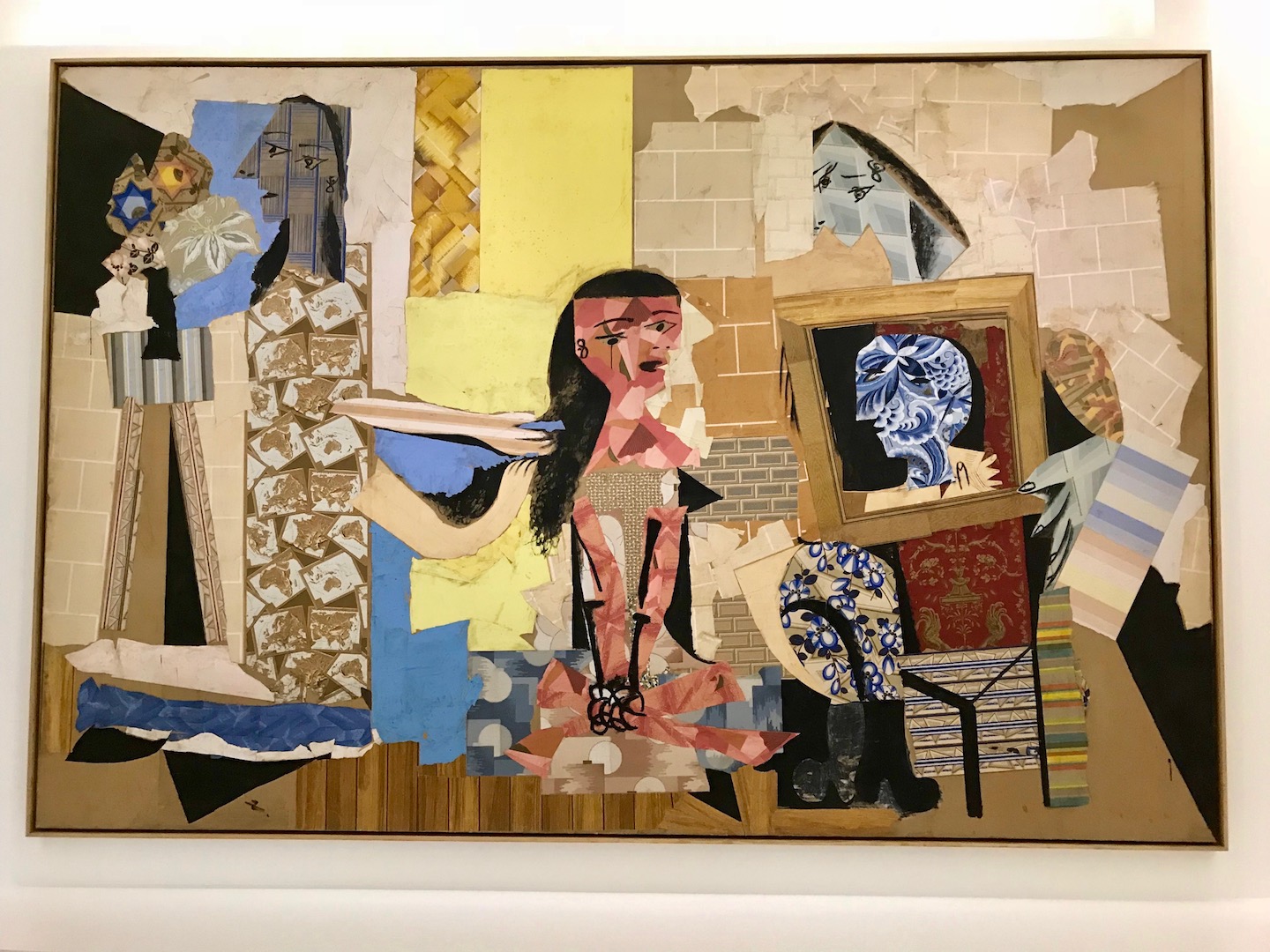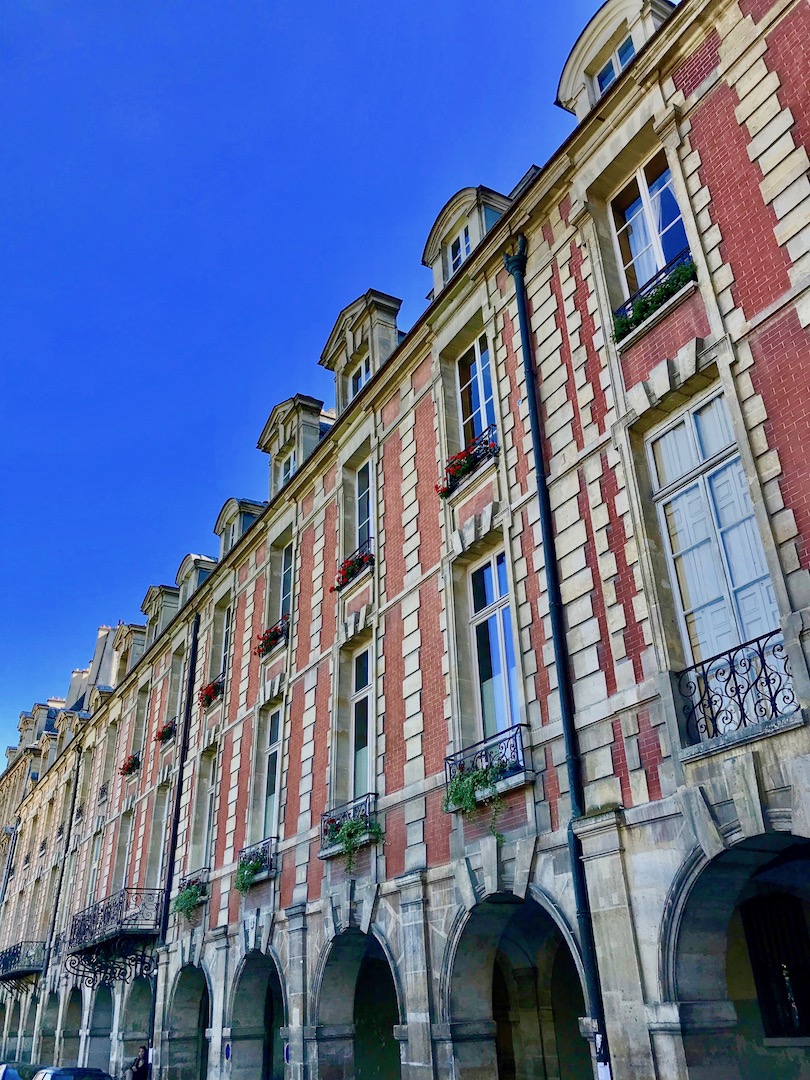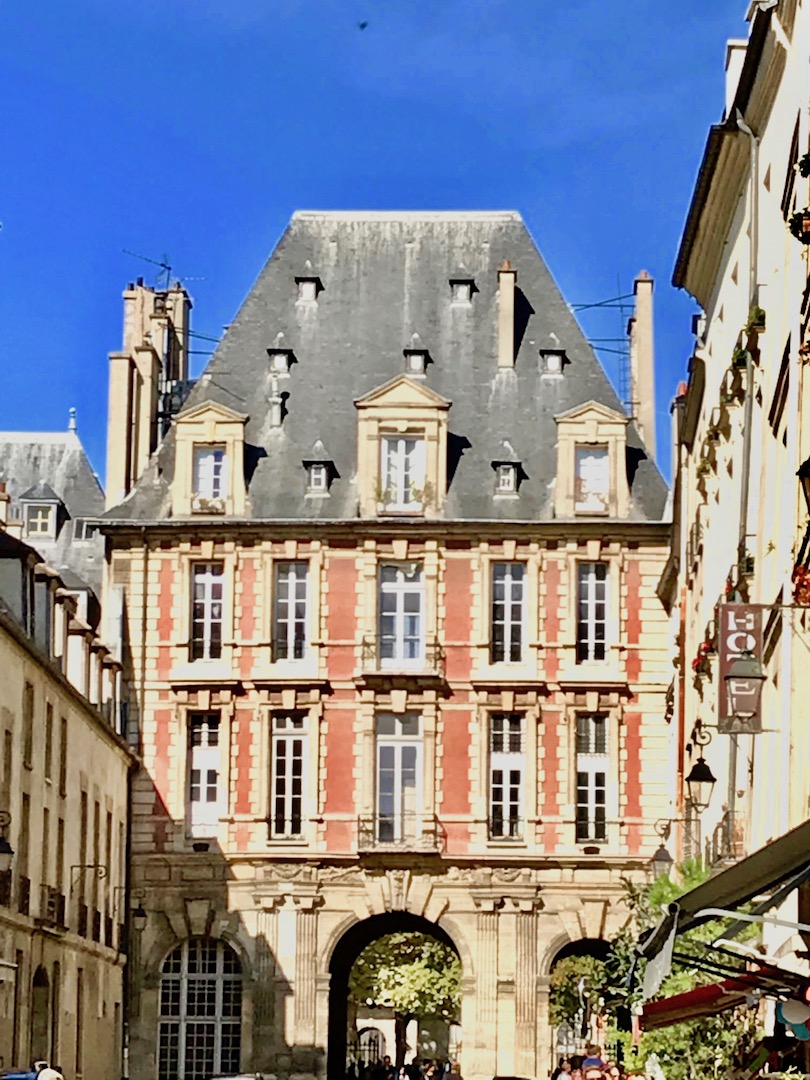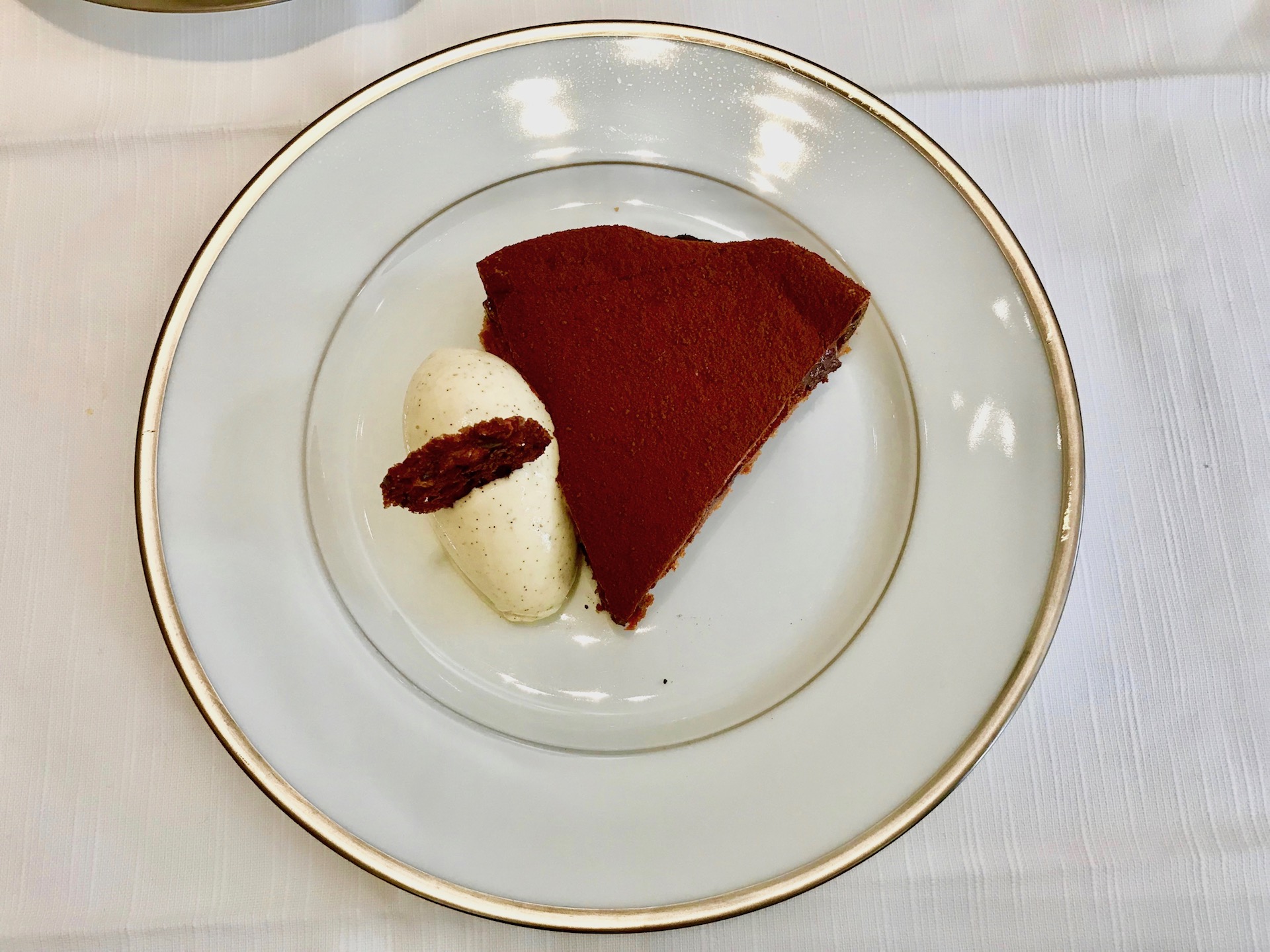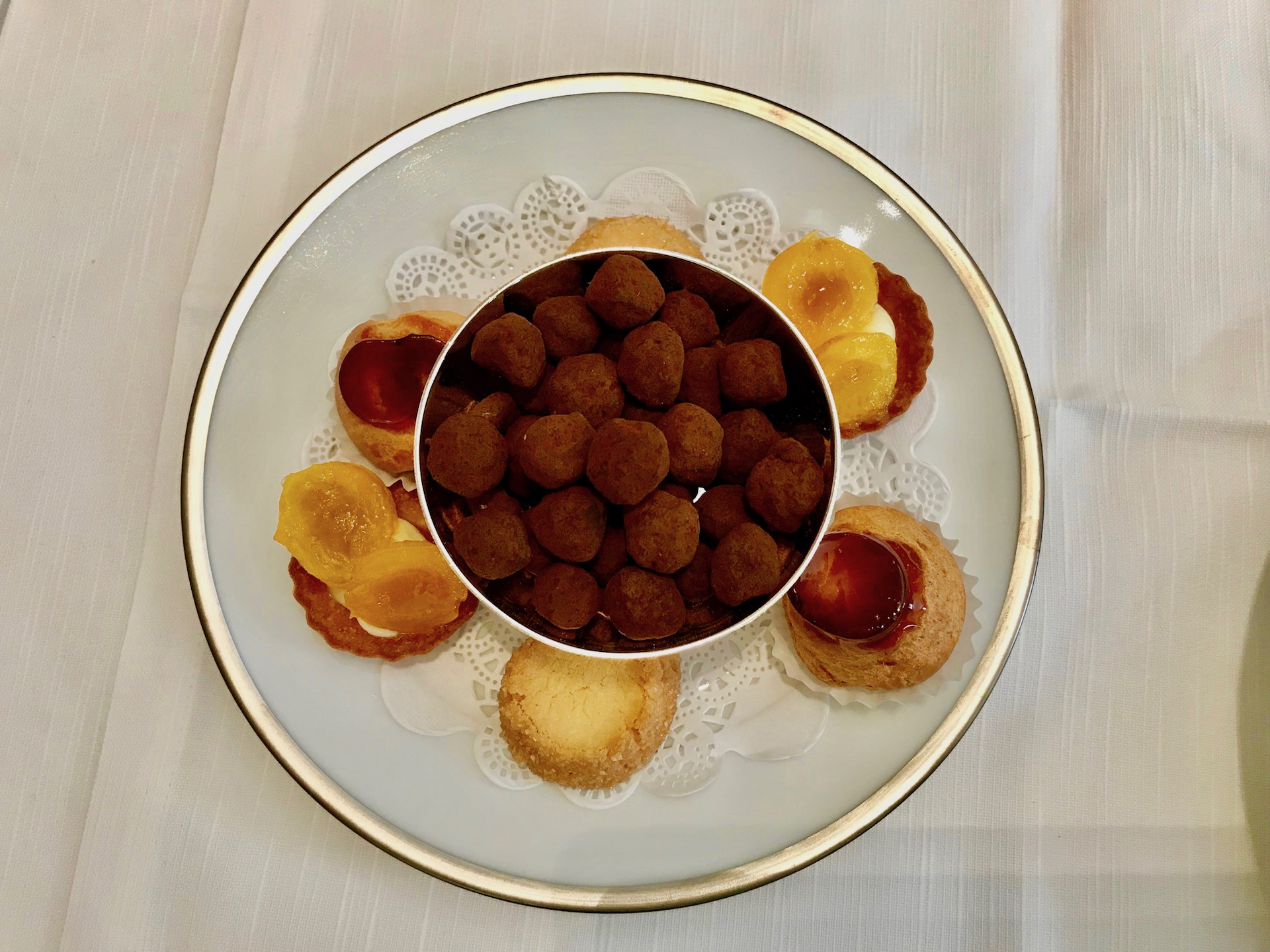Delightful Rambles in Paris’s Le Marais
Paris rewards deeper explorations of its various arrondissements, if you have been able to sample its greatest sights on previous excursions. We chose to base ourselves for a weekend in the Marais district and enjoy its unique atmosphere, history, food, shopping and sights through walking its streets and using the metro as necessary. But allow yourself to just stroll the area and enjoy the many discoveries you can have simply by turning down side streets and finding a cozy café, stumbling onto a charming garden or succumbing to the aromas of a local patisserie.
Charming Boutique Hotel Lodging
After taking the Metro from Orly airport into the city and on to the Marais district, we checked into the boutique hotel La Chambre du Marais.
Located in a former townhouse, this upscale boutique hotel with only 19 rooms is located on Rue des Archives in the heart of the Marais district in Paris’s 3rd arrondissement. Opened in June 2016, the hotel has no check-in desk, making you feel like a guest being warmly received at a private home. We were offered a welcome glass of champagne as we sat comfortably in the small reception room. Service was excellent —we subsequently left an item of clothing in the room, and within a day of leaving had a concerned email from the staff asking us how we would like them to help us get the item back.
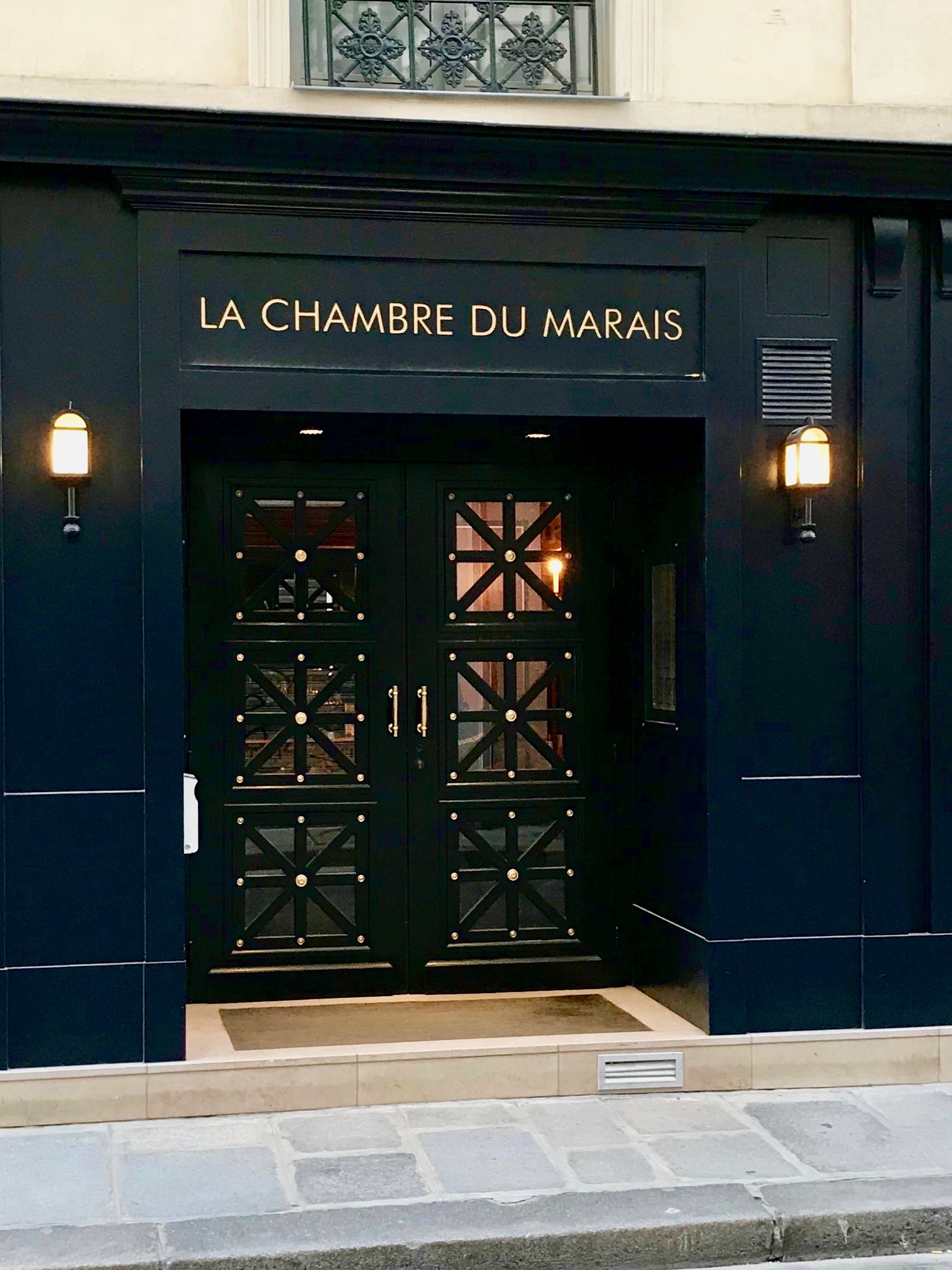
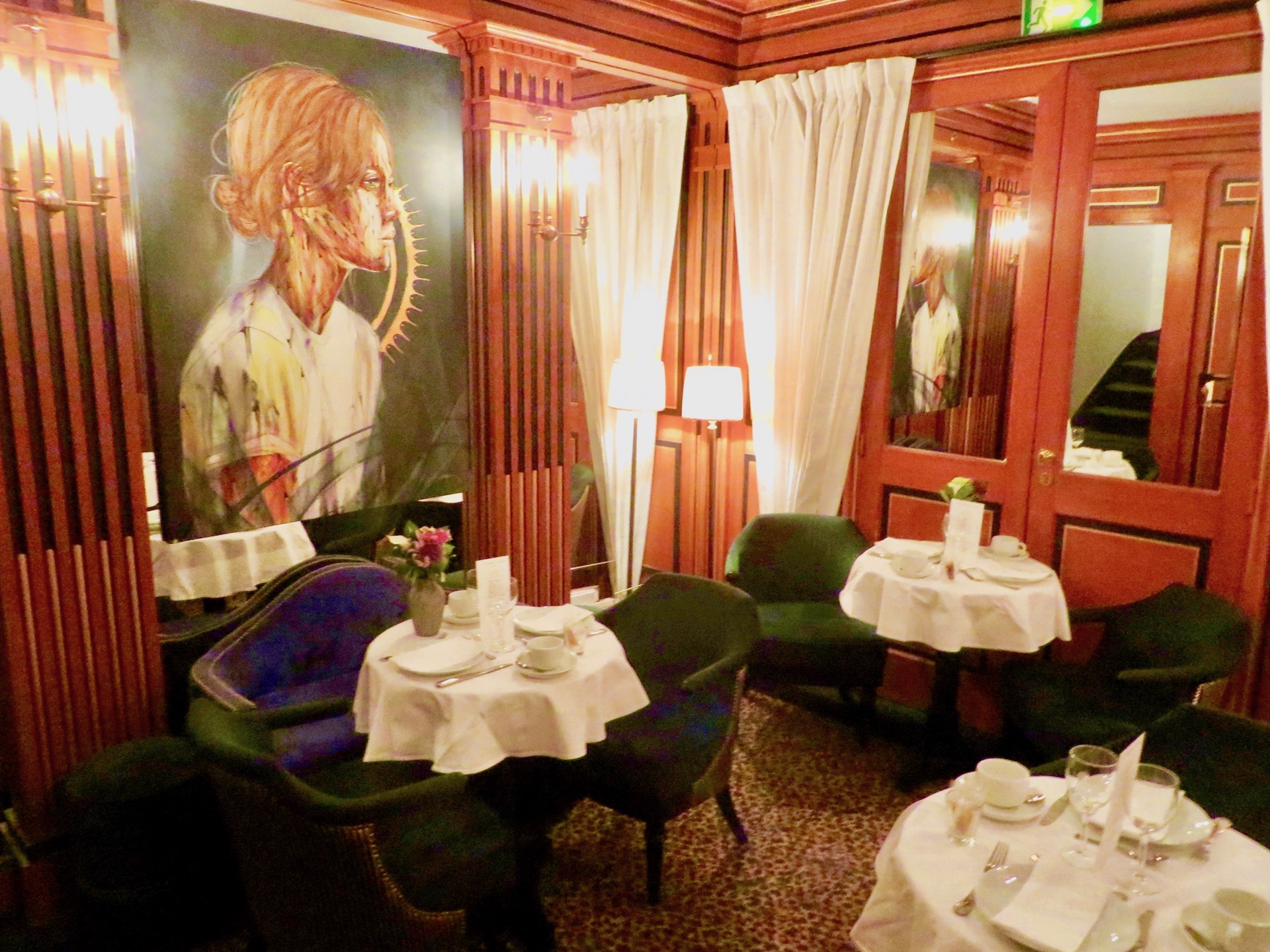
Though the room was small, there is fine attention to detail and décor, and it is an outstanding location for explorations of the Marais. It’s a brief five minute walk to the nearest metro stops, Temple or Arts et Metiers. Two cafes are steps away at the opposite corners of Rue des Bretagne for breakfast, drinks and people watching, Café de la Mairie and Le Sancerre.
It is also a 2-minute walk to the Square du Temple, an English landscaped park that was the site of a former 16th century Knights Templar palace. This palace was transformed into a prison during the French Revolution and held both Louis XVI and Marie Antoinette within its walls. Napoleon ordered part of the palace destroyed, with the rest falling to Baron Haussmann’s massive city-wide renovations under Napoleon III, making room for the present-day square. There is a large pond with a small waterfall cascading over rocks brought from Fountainbleu, plus some rare varieties of trees.
Le Marais History and Exploration
Considered the trendiest shopping district in Paris (check out the Rue des Francs Bourgeois), Le Marais (“the marsh”, named after the marshland it once was before being drained in the 12th century) spreads across the 3rd and 4th arondissements, the 3rd sitting in the southern reaches, with the 4th to its north. The 4th is considered the flashier section with the Place des Vosges and the Centre Pompidou, with the 3rd preserving a more village-like feel amidst medieval and Renaissance architecture, including its 17th century hotel particuliers or private mansions. One we especially admired was the Hôtel de Marle, home of the Institut Suédois (Swedish Institute),11 rue Payenne, which has a lovely cafe with tables in the courtyard in the summer.
It’s a quirky and fun artistic neighborhood with a rich history, having been both a chosen location for royal buildings and the site of the Jewish quartier, which is still much in evidence in the shops along the cobblestoned pedestrian street, Rue de Rosiers. With delis, Jewish bakeries and falafel restaurants, the area was a haven for Jewish immigrants in the 19th and 20th centuries.
Get your cultural fix at a great collection of museums including the modern art and architectural curiosity of the Centre Pompidou, a fabulous collection of Pablo Picasso at his namesake museum, as well as the Musee Cognacq-Jay with its collections of furniture, porcelain and paintings, and the Musee Carnavalet which covers the history of Paris.
Musee Picasso
We grabbed a pair of croissants (pain au chocolat and croissant aux framboise with a delicious raspberry filling) from a bakery on Rue des Bretagne to eat while we walked to the Musee Picasso. There we saw a great exhibit of his masterworks. The 1659 Hotel Sale building housing the museum is itself exquisite, named after the salt tax profession of owner Pierre Aubert. Its central staircase is simply spectacular, modeled after the stair plan designed by Michelangelo for the Laurentian Library in Florence.
We have had the good fortune to see the Picasso collection in Antibes as well, but this museum in the Marais is the largest collection of his works (over 5,000), with the permanent collection covering the upper two floors. These areas contain sections entitled Picasso’s Picassos, with art pieces of his own making that he kept in his possession, and Picasso’s Personal Collection on the 3rd, with artworks of other artists he obtained for himself, including pieces by Matisse.
Place des Vosges
A Renaissance architectural beauty, the Place des Vosges square was ordered built in 1605 by King Henry IV, consisting of 36 red brick town houses with steep slate roofs, nine on each side, under which run arched arcades full of shops and restaurants. It was named by Napoleon to honor the northeastern Vosges area of France, the first in the country to pay taxes to the Revolutionary government. In the center is a garden of lawns, fountains and trees. At the center is an equestrian statue of Louis XIII, during whose reign (1610–43) the square enjoyed a golden age of festivals and tournaments.
It was one such tournament that proved pivotal to the creation of the square. In the 16th century, a royal palace called the Hôtel des Tournelles stood on this site. In 1559, an organized joust was held there, during which the monarch, Henri II, suffered a fatal injury. His wife, Catherine de Médicis, subsequently had the palace demolished. His descendant, Henri IV, used the free space to build a royal square.
Other things to see around the square include the Victor Hugo house, and the courtyard of the Hotel Sully. At 28 Place des Vosges, Pavillon de la Reine, or Queen’s Pavillon, was built in 1612 also by Henry IV. It’s a beautiful hotel approached through an arcade into a small formal garden, and hearkening back to the time when the square was home to royalty.
Elegant Dining at L’Ambroisie
Our main reason for visiting Place des Vosges was a lunch reservation at the 3-Star Michelin restaurant L’Ambroisie. L’Ambroisie is named for ambrosia, the food of the gods, a fitting name for the feast to follow, each dish a culinary treat, and a one-of-a-kind dining experience.
Entering into the hushed surroundings is like being greeted into a private French town house drawing room with tapestries hanging on the walls. Hushed civility and impeccable service are the order of the day here. The restaurant has carried three Michelin stars for 30 years, since 1988, the longest such stretch in Paris. It moved to its current setting in 1986, taking over an old silversmith’s shop under the romantic arcades.
“In the setting of the Place des Vosges, Ambrosia is a true jewel of French gastronomy” reads the restaurant’s website. Chef Bernard Pacuad is quoted as saying “Cuisine of civility. Questing for the beautiful product. Cooking without affectation. Offering the best, simply”.
This was our first opportunity to experience a 3-star Michelin restaurant. A formal business lunch party sat to our right, while a food critic sat at the table behind us, discussing each course at length with the waiter.
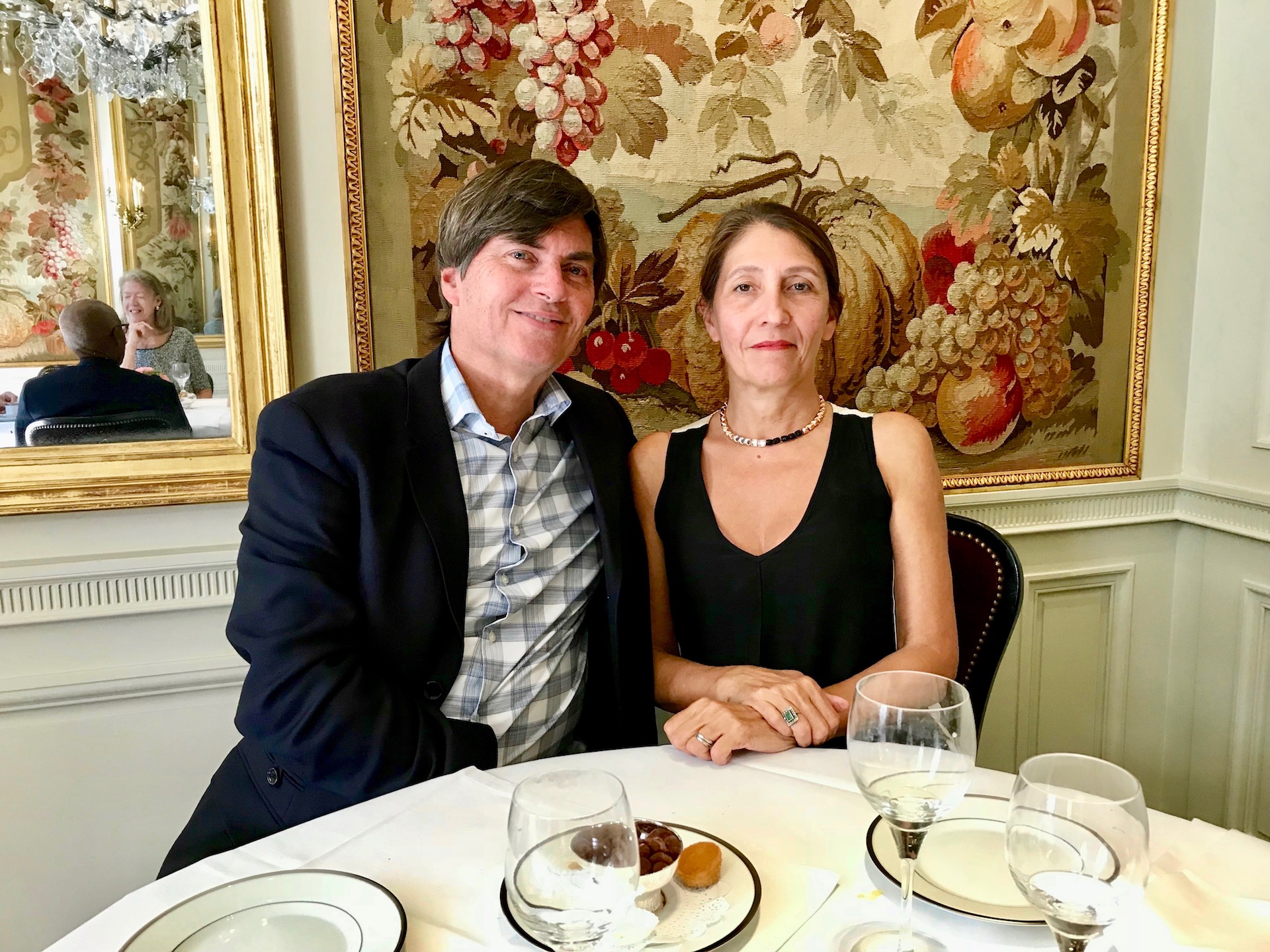
This is strictly an a la carte menu, with no tasting menu offered. We selected three starters, two entrees and two dessert courses, plus several glasses of wine, following the sommelier’s advice on the best option to accompany our selections.
We began with a savory mushroom amuse bouche with garlic and parsley, then followed with three delicious starters.
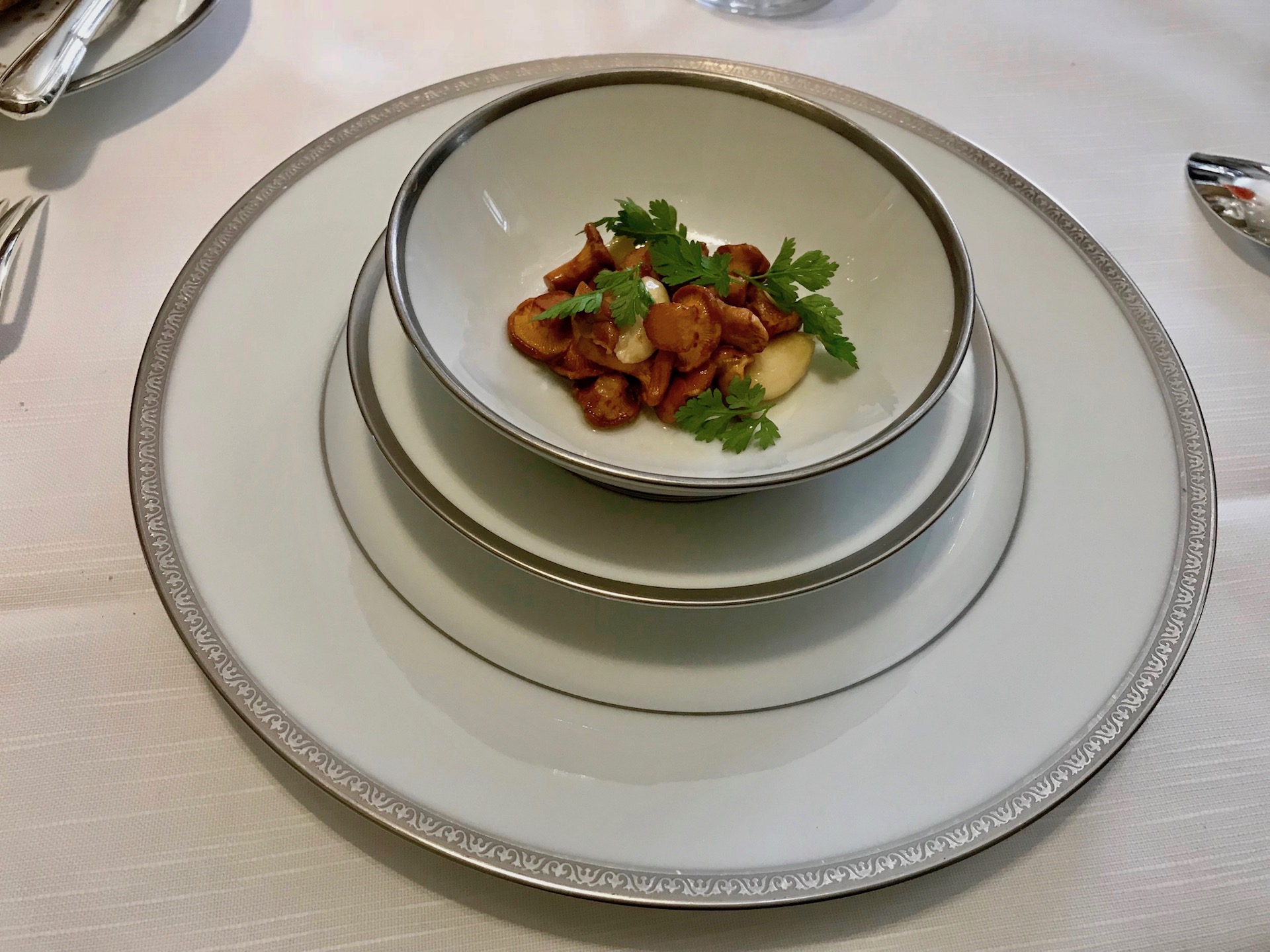
Minestrone escargots et coriander—I hesitated to order snails, but this is the place to have them, as they were mouthwatering. The escargots were arranged in four pasta shells replicating the snail’s shell, and the surrounding vegetable minestrone was exquisite.
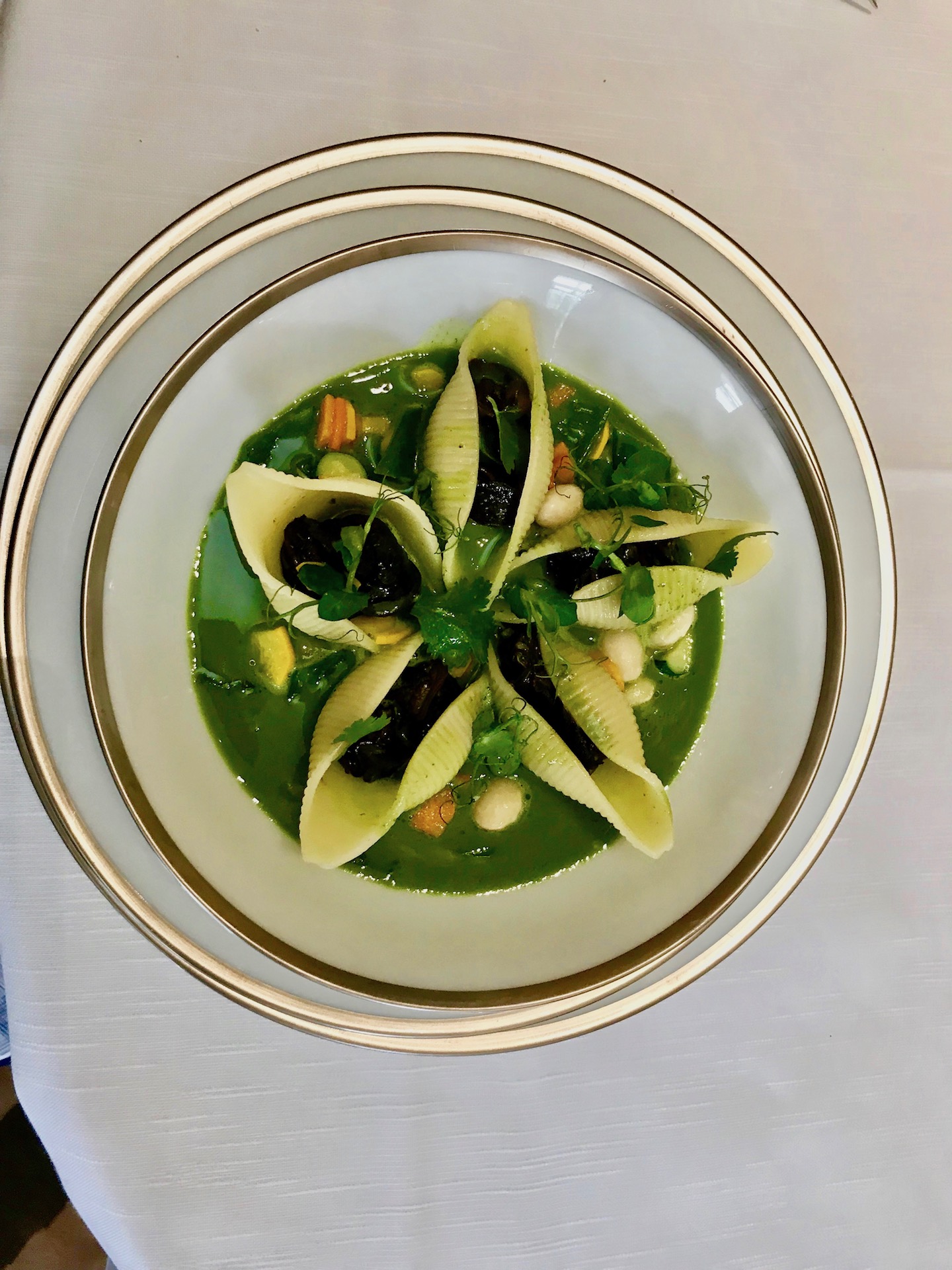
Oeuf a la muscovite et caviar—a masterpiece of culinary skill and culinary technique, the egg is soft boiled and green from a watercress emulsion, with a generous portion of golden caviar from China.
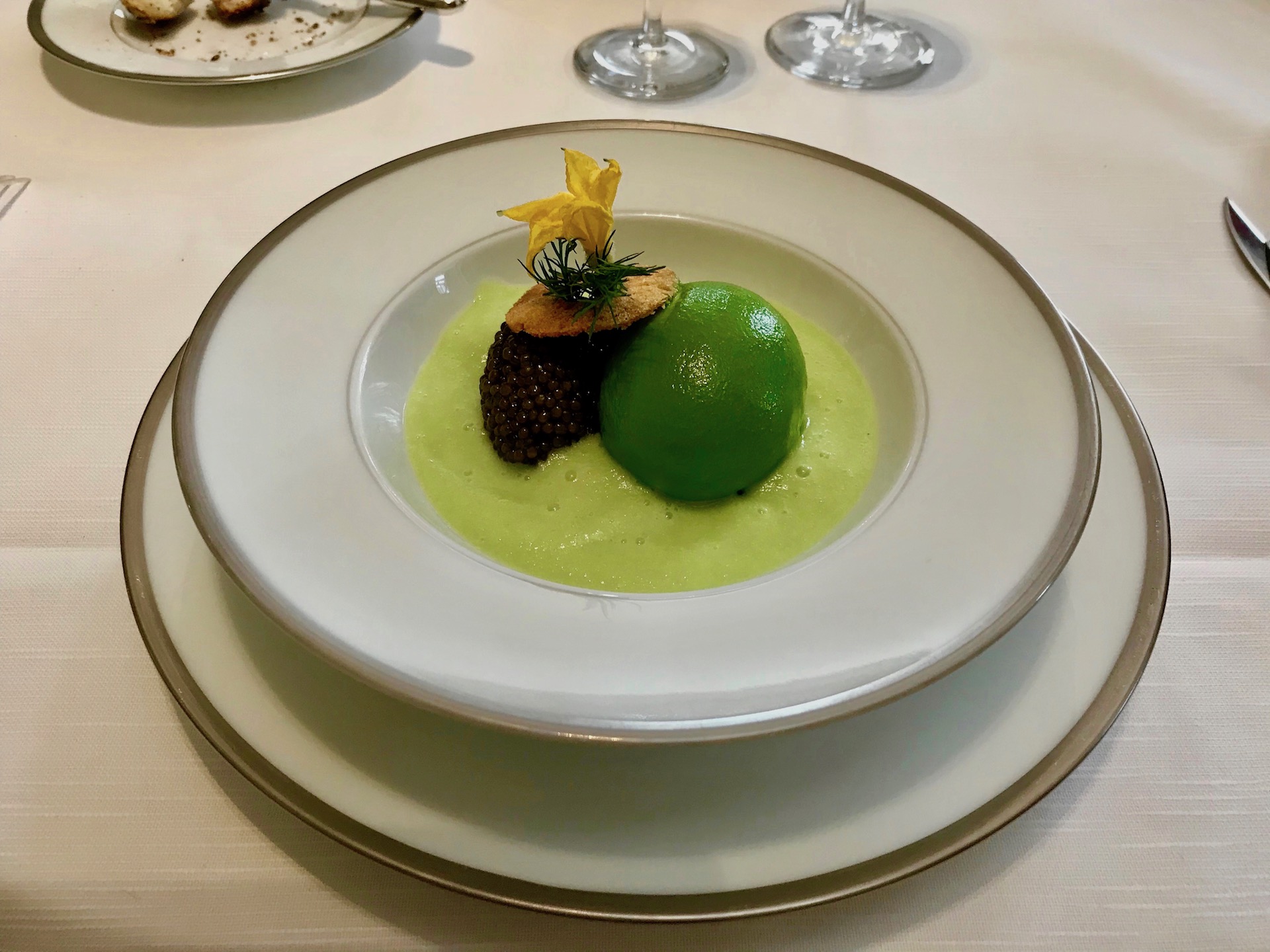
Ambroisie de poivrons doux—a sweet bell paper mousse with a tomato coulee.
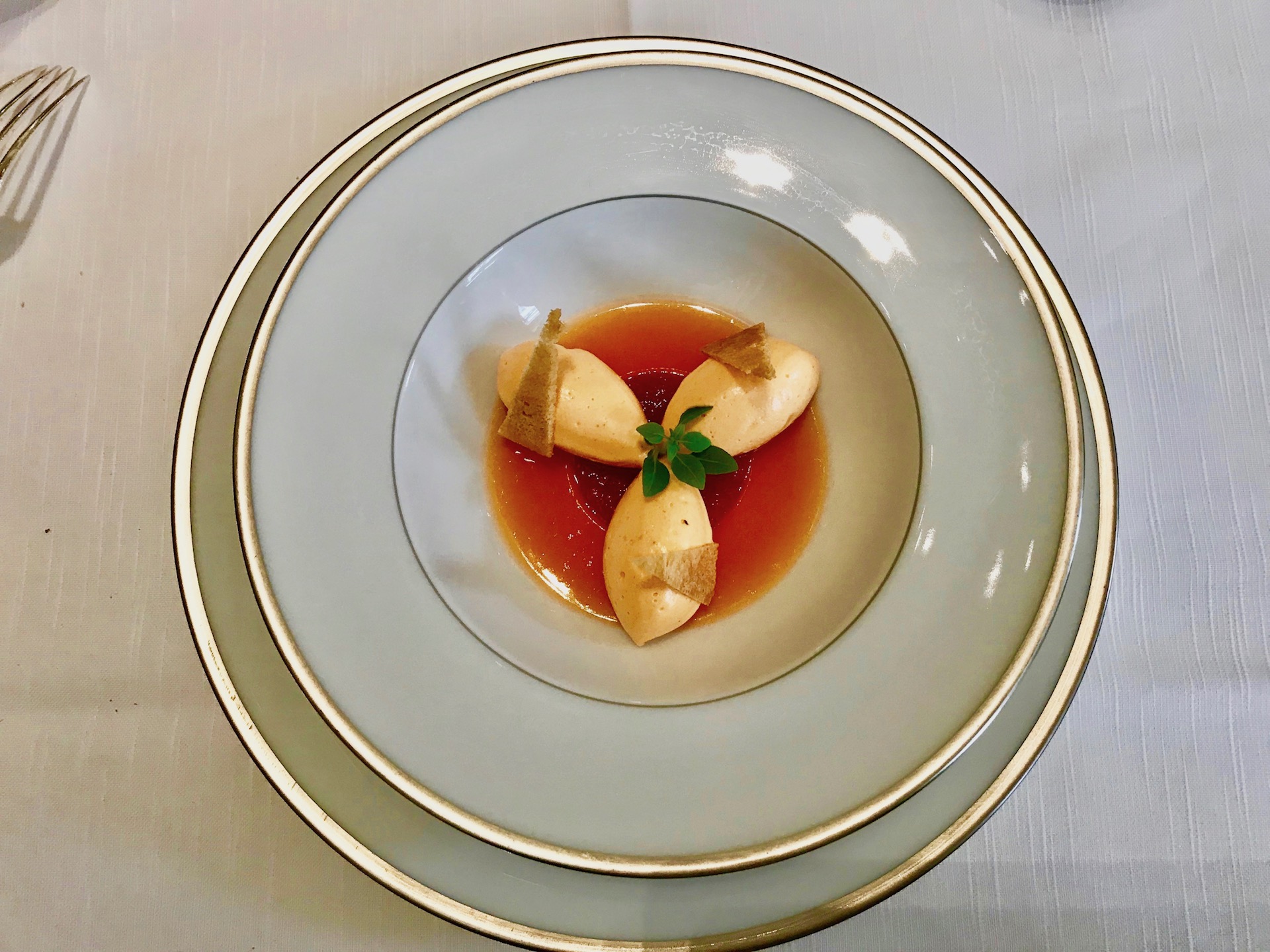
Next, we had chosen two fish entrees.
Rotie de filets de rougets—red mullet is a Mediterranean fish, full flavored and served in a sauce commonly used for bouillabaisse accompanied by stuffed zucchini flowers.
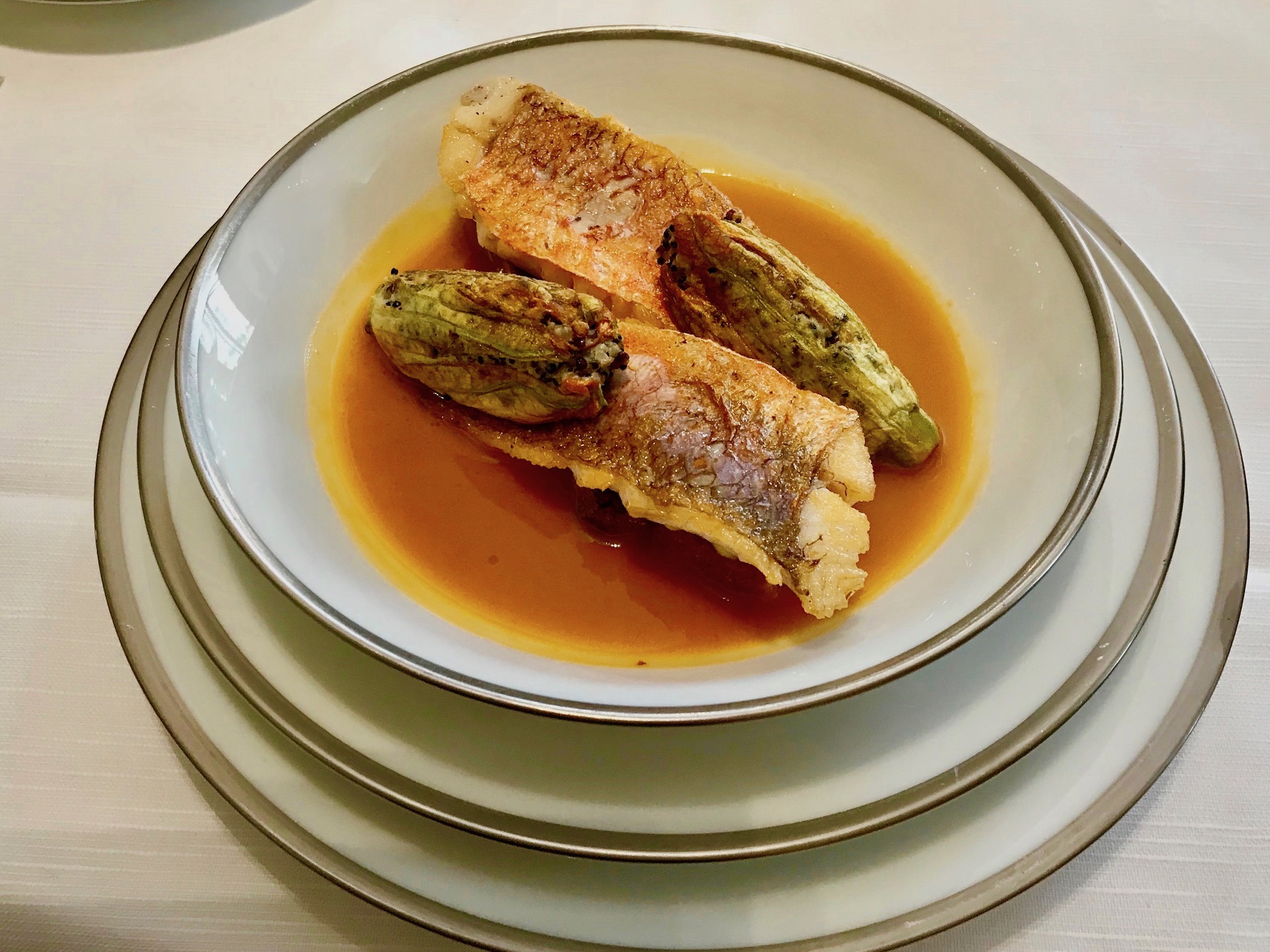
Homard au fenouil et anis—lobster stewed in a thick sauce with fennel and anise.
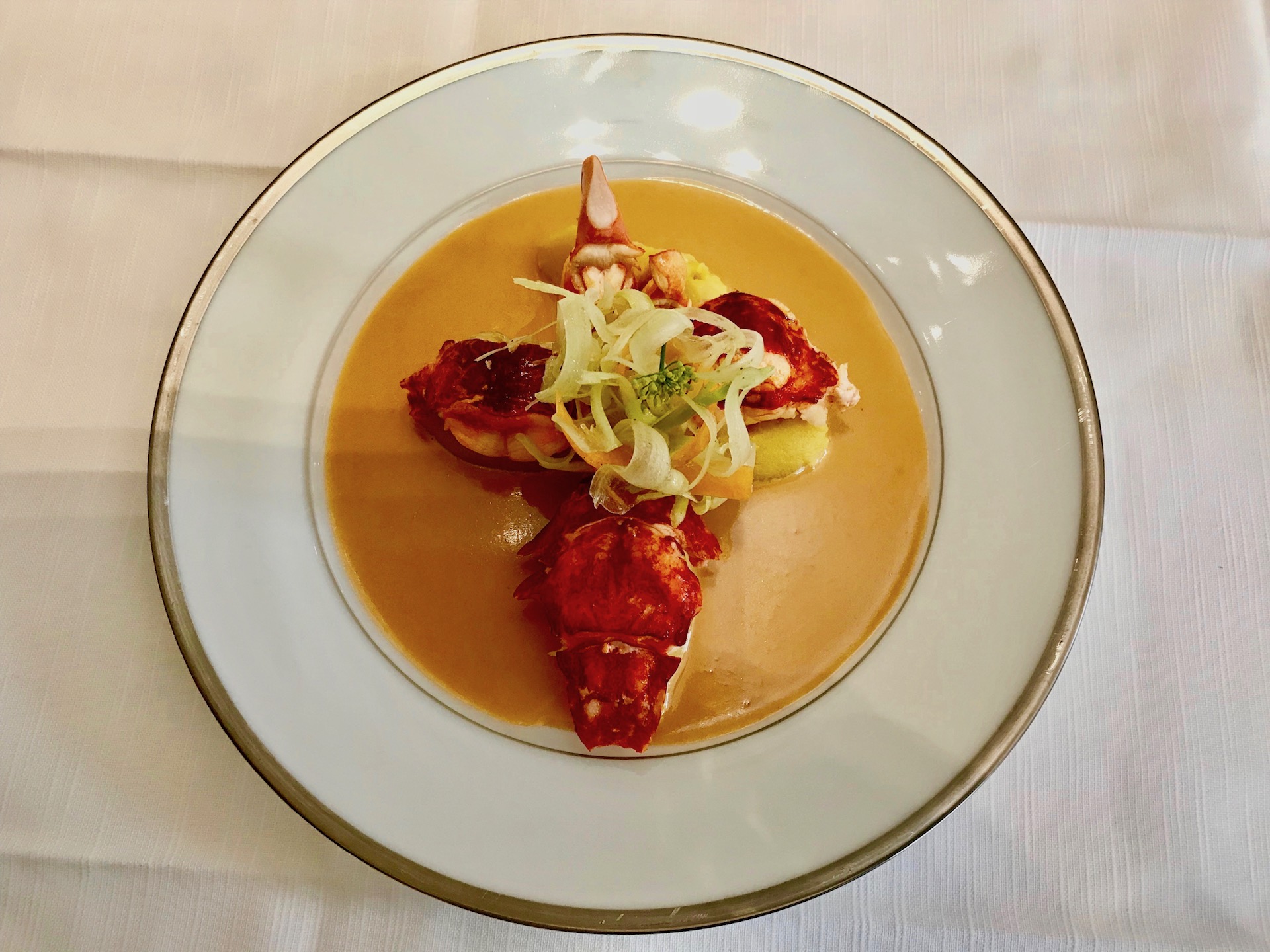
And we closed with one cheese and one dessert course.
Fromages frais et affines, an eclectic selection of 7 cheeses; we let the knowledgeable waiter make the choices.
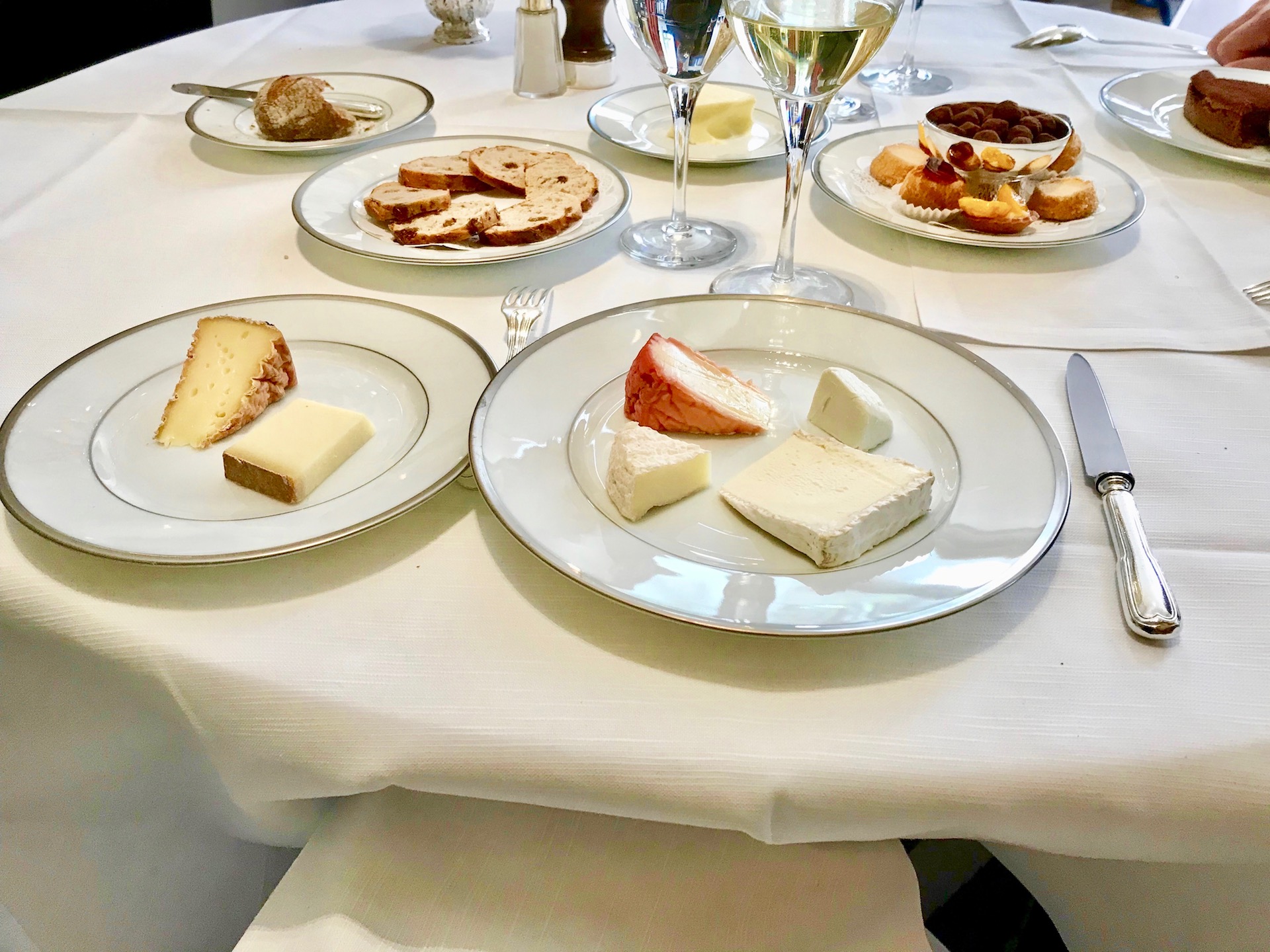
Tarte chocolat & vanilla Bourbon, an amazing chocolate torte with dark chocolate sprinkled on top and a vanilla ice cream with Bourbon sauce.
Paris has many tantalizing choices to tempt the traveler, including world-class sights and exquisite dining opportunities. But exploring a fascinating neighborhood such as Le Marais can be a richly-rewarding break from venturing far and wide across the city. Take time to slow down and savor the local markets, say bonjour to the shopkeepers while looking at some of the trendiest merchandise the city has to offer, watch the passing scene from a corner café, duck into the charming garden of a hotel particulier, sample a warm croissant from a patisserie and visit one of the delightful museums. You may find that Le Marais calls you back on every return visit to the City of Lights.

